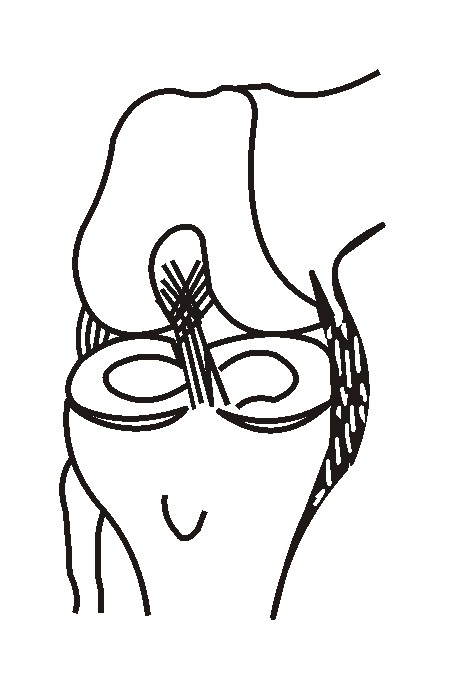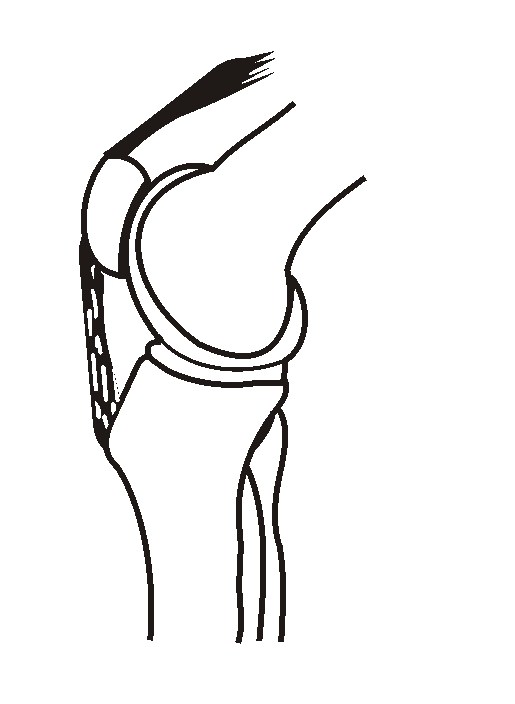The knee joint is one of the greatest gift to mankind by mother nature. Knee joint may look like a simple joint to a laymen, but is one of the most complex joint in the body. It is this complexity of the knee joint that allows humans fit to walk straight on two legs. As humans are the only species on this planet that walks straight; it is important for humans to be aware of its structure.
Due to straight posture of the human body, all the body weight falls on the knees. Hence any extra weight that a person gains, puts an extra load on his knees. Secondly, as it is not covered by muscles and fat all around; it is also likely to be injured by direct impact.
Three are many common reasons that damages our joint. Click here to know the most common causes that damages our knees.
The knee is essentially made up of four bones; namely the femur (thigh bone), the tibia (leg bone), the fibula (side bone of the leg) and the patella (the knee cap). The bones provides structural support to the knee joint. Bones are usually injured due to a major injury and is generally apparent to a laymen also. However, a hairline fracture or a bone bruise may not be apparent and requires a specialist to diagnose. Click here to know more about bones of the knee joint.


These bones remain attached to each other via ligaments and joint capsule. There are four major ligaments in the knee joint that keeps different bones of the knee together. We can compare ligaments as the door hinges and bones as the door. That means, the role of the ligament is like hinges that keeps door in its place and also allows its designated and controlled movement. If the hinge is broken, the door will hang loose and door will not move in its orderly manner. Similarly, if a ligament is torn than the knee bones will become loose and unstable. The patient will develop falling tendency or unstable gait. A major injury is required to tear the ligaments and usually that injury is well remembered and correlated by patients. Click here to know more about the ligaments of the knee joint.
In addition there are few more important ligaments that controls patellar movements (knee cap movement). These ligaments keep patella (knee cap) to remain in the centre of the knee without tracking its course during the knee joint movement. One extra major ligament (patellar ligament or patellar tendon) transfers quadriceps power to the leg bone (the tibia) via patella (the knee cap). Click here to know more about the patellar ligaments.
The knee muscles which go across the knee joint are the quadriceps and the hamstrings. The quadriceps muscles are on the front of the knee, and the hamstrings are on the back of the knee. These muscles and associated tendons provide the force required for the movements of the knee joint. Click here to know more about muscles and tendon injuries of the knee joint.
There are also two discs like structures in between the femur and the tibia. These discs are ‘C’ shaped and are called meniscus. These discs (meniscus) are shock absorbers of the knee joint, but gets easily damaged on a twisting injuries. A small injury can also cause a meniscus tear and patient may not remember the exact episode of his/ her injury. Click here to know more about the meniscus.
All the bones that come in contact with each other are covered by a special tissue called cartilage. It is this structure that allows pain-free and limitless movement/ gliding of knee joint bones on each other. Cartilage (joint covering) is a special tissue that doesn’t have blood supply and nerve supply. Hence it has very limited capacity to heal itself and minor cartilage injury doesn't give pain. Anything that is damaged inside the knee joint (ligaments, meniscus, bones etc) ultimately puts abnormal load on the cartilage and causes rapid wear and tear of the knee joint. Click here to know more about the Cartilage.
In short we can say that….
- Bones Support the Knee Joint
- Muscles Move the Knee Joint
- Ligaments Stabilise the Knee Joint
- Meniscus Cushens the Knee Joint
- Cartilage Protects Bone Ends and Allows Smooth Movement.